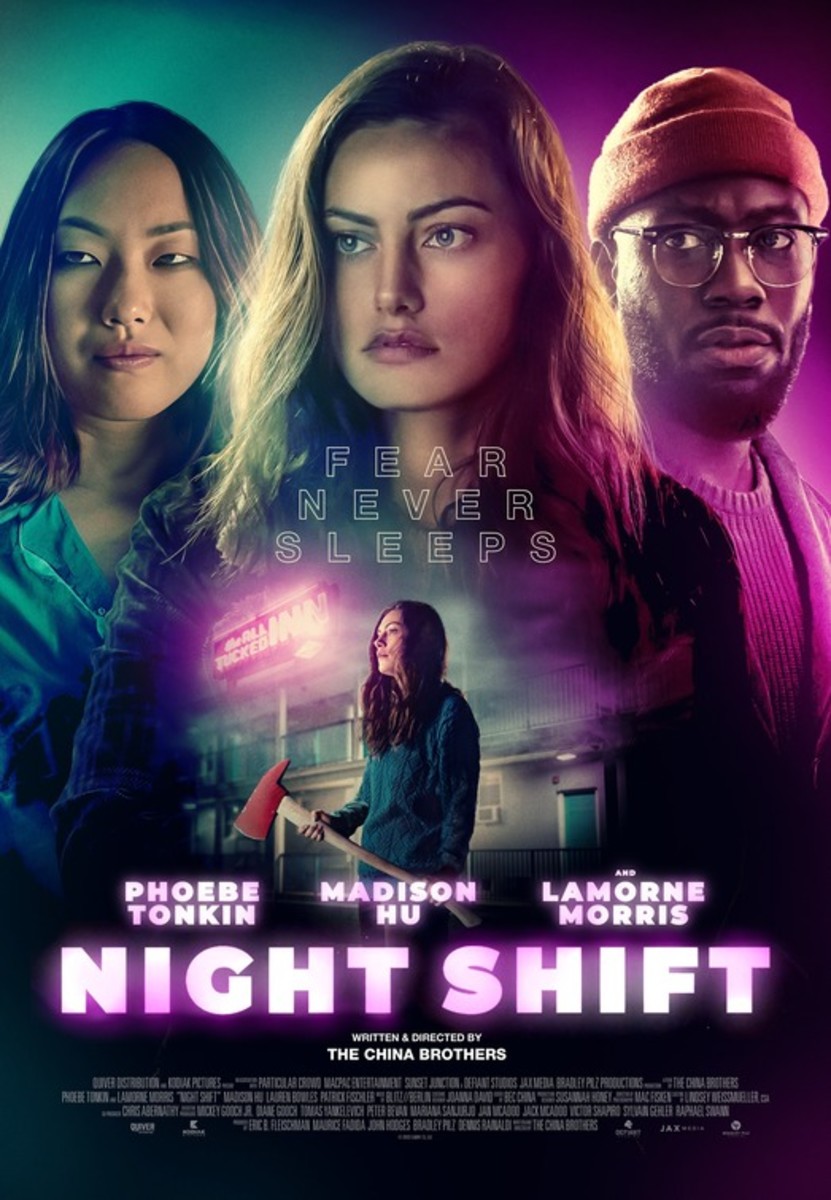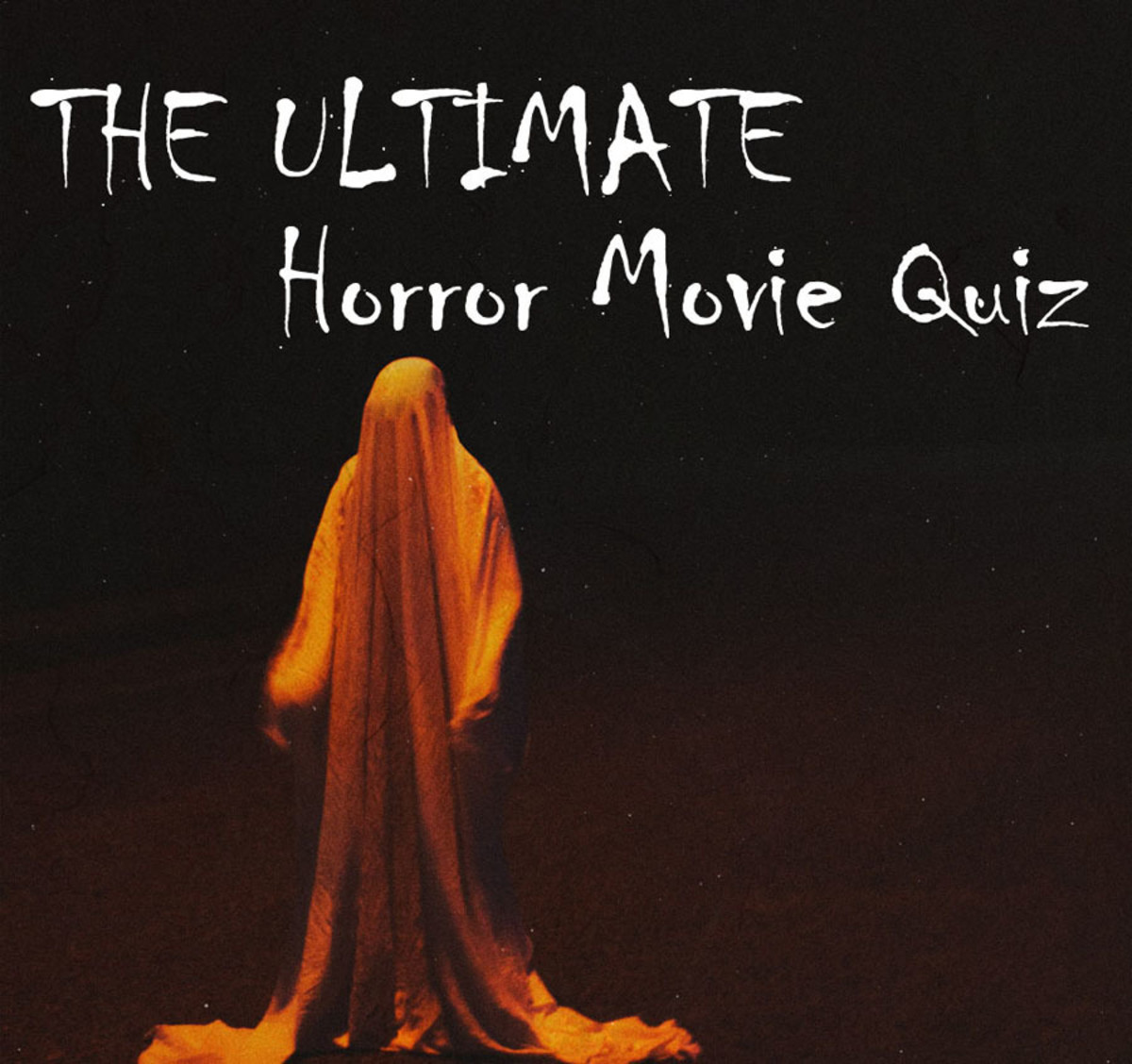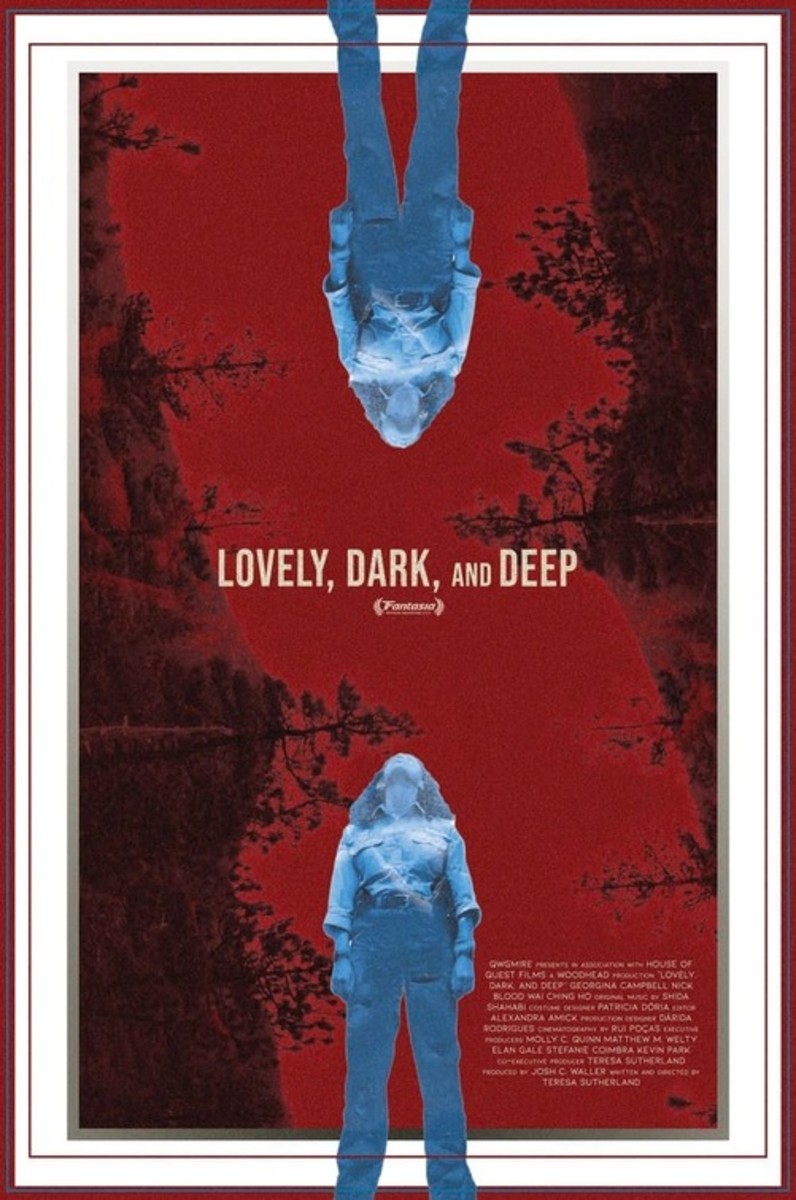Tragedies and Nocturnes: The True Curse in Hammer Films' Curse of the Werewolf

Tragic Themes Make The Curse the Werewolf More Complex Than A Superficial Monster Movie Potboiler
Hammer Film's 1961 classic - and sole - lycanthrope feature, The Curse of the Werewolf, holds a place among fans of horror cinema as one of the finest werewolf films ever made. The controversial film suffers from some stumbles, and few suggest the feature lacks flaws. Brilliant in segments, disjointed in others, the film garnered criticism for its decided lack of werewolf scenes compared to the more traditional monster-on-the-loose outings. More werewolf moments existed in the original script ( there were even two werewolves), but the British censors mandated the werewolf scenes suffer cutbacks. Retained from the original version of the screenplay is the focus on the tragic life of the cursed Leon, played by Oliver Reed.
With werewolf mayhem curtailed until the climax, the bulk of the film centers on the circumstances surrounding Leon's birth, the origins of his curse, and the hero's struggles with the burgeoning curse throughout childhood and adolescence. Finally, as he reaches adulthood, the focus shifts to his endured fate when the curse of the werewolf manifests.
An argument can exist that, due to the narrative structure, The Curse of the Werewolf comprises a trilogy. The events leading up to the werewolf's birth, childhood, and adulthood descent into lycanthropy reflect three diverse stories. Within the framework of the three narrative components, the film remains character-driven. The tale unfolds more akin to a melodrama than a horror film, allowing the film to take a compelling thematic direction. The alternations of the original vision have the impromptu effect of changing the title curse's prime focus.
The curse of the werewolf doesn't refer entirely to Leon's evolution into a werewolf. The circumstances that lead him to become a beast reflect the true curse he must contend: a cursed and conflicted existence.
Such themes were consistent in werewolf films until the emergence of the "roleplaying" inspired direction of turning the projects into dark fantasy and adventure. More action is present in such films, but much of the tragic melodrama passes away and becomes lost.
The Tragic Origins of the Curse
How do the curse and story begin?
A beggar wanders into a Spanish town circa the 1700s and finds himself rebuked when begging the townspeople for alms. The simpleton beggar takes people at their word when the townsfolk joke that he will find money and gold at the castle of an evil and miserly Marquis.
The beggar foolhardily follows the townspeople's suggestion to visit the Marquis' castle and seals his fate. The cruel Marquis reflects class struggles of the era as his lavish wedding paid by the barely surviving townsfolk's taxes. The Marquis treats them like animals symbolically and then treats the beggar literally like an animal forcing him to beg like a dog and, in an act of cruelty, locking him in the dungeon, as if the man were a caged animal, for making an inappropriate and suggestive comment to the Marquis' wife. The inappropriate comment occurred after the Marquis forced the beggar to become drunk and make a fool of himself dancing for the upper-class guests at the wedding and to the bemusement of a mean aristocrat in the Marquis.
The Marquis created an embarrassing scene, but the beggar receives the punishment: life imprisonment in the castle's dungeon.
The beggar eventually turns into a beast-like human, having devolved into an insane feral animal from years of imprisonment. The elderly Marquis, always a beast and the real inhuman animal, has become even eviler in his old age and tries to force himself on a servant girl. She rebukes him, which leads him to throw her in the dungeon where the feral beggar rapes her.
Leon, conceived from these horrific events, born unwanted on Christmas Day, comes into the world cursed. While Leon is taken in by a bachelor scholar and housekeeper who love the child, Leon cannot escape his fate because he cannot escape his past or who he is. He carries the curse of both his father, the beggar, and his distant, surrogate father, the more animal than human Marquis.
Most frightening about this scenario is it is entirely believable. No fantasy element emerges until Leon undergoes his baptism, and the first hints of the otherworldly curse appear. Before this point, the film could easily fit into another genre outside of a horror film and lose none of its unnerving impacts.
Realism, Science, Psychology, Religious Themes and the Tragic Life of Leon the Werewolf
Subtexts present in the film reveal dysfunctional relationships that lead to dysfunctional curses later in life. However, this type of psychoanalysis (and pop psychology) was not yet in vogue during Curse's release. Perhaps by accident, the film contributed, in part, a much-needed infusion of realism in the modernization of the genre. Yes, supernatural fantasy elements grow into the overarching components of the curse as the film progresses. However, the realism, born of the psychological and emotional side of the humans in the film, truly gives it the dramatic edge necessary for making the film memorable.
The supernatural elements in early horror films generally did not come with any real explanation. We are to take it as a given that otherworldly entities exist. In Universal's 1942 film, The Wolf Man, we are lead to believe that supernatural elements exist on a microcosmic level and small populations of supernatural beings exist. We can look past the lack of explanation for supernatural creatures in The Wolf Man because the focus remains the tragedy of the character and his failed family relationships existing in the backdrop of narrative.
Somewhat overlooked in the dark genre is the role science traditionally plays in horror films. Frankenstein depicts science as the root of horror, as does The Invisible Man and Dr. Jekyll and Mr. Hyde. Although the seemingly supernatural wolfsbane plant turns Henry Hull into a monster in Werewolf of London, an argument can be made that this is a biological reaction and not a supernatural one. Science can lend credibility and plausibility in horror films and, in turn, enhance the suspension of disbelief of the fantastic.
Fantasy is where the supernatural and the scientific go off the proverbial rails together.
Fantasy films are those where fantastic creatures' bizarre nature is both taken for granted and too readily accepted and believed. Frankenstein, The Wolf Man, and Dracula all have reserved horror elements to them. House of Frankenstein is pure fantasy because we know the world we are looking at cannot possibly be real as suspension of disbelief truly fades away.
In Curse of the Werewolf, an explanation for the supernatural origins connects with the mythology of werewolves in folklore. Damnation based on an affront to God is what gives spawn to the werewolf. Ironically, proof of the werewolf is a de facto proof of the existence of God. (God cannot curse someone if God does not exist) Despite the strong religious motifs and symbolism in the film, the film's side component is virtually ignored. Maybe it takes the themes in a direction some would willfully prefer not to address.
In many horror films, the actual genre is closer to fantasy than horror. Horror is most effective and frightening when it exists as an outlier to reality. In Curse of the Werewolf, we see approach, an approach taken in films such as The Exorcist. The horror element remains limited as it intrudes and causing great chaos in a world that is no different than ours. Remove the presence of the werewolf out of the film, and you have a believable melodrama.
What contributes a great degree to the film's fantasy element is at least acceptable for suspension of disbelief was Curse was created during periods when religion played a more prominent role in society. Strong belief in otherworldly evils such as a devil can allow someone to suspend disbelief and accept the absurd notion that a werewolf exists. No one believes werewolves exist, but the belief in God exists so strongly that accepting the creation of the werewolf due to an affront from God makes for an acceptable plot device and creates a plausible explanation for the origin of such a fantastic creature. The creature's curse does not come from the devil, but God and the manifestation of becoming a werewolf is folklore come to life through defiance of the almighty.
None of this was in the initial plan, though.
Damned from Above and Cursed by the Deity
In the original screenplay, the beggar was a werewolf, and this is why his offspring became a werewolf. British censors found a rape scene involving a werewolf to far too outrageous to allow, so the beggar became someone driven mad and bestial due to his confinement in the dungeon. Changing a werewolf to a feral human requires the notion the child is cursed by God to be taken literally. What other explanation can there be given for Leon becoming a werewolf? The beggar was a human and not a supernatural creature.
The result of the script change in the screenplay leads to the inclusion of religious themes within the work, one that now presents a man who is cursed spiritually, as well as mentally and physically. The more traditional curse of being a werewolf centers on being cursed due to ''no fault of your own'' leading to the curse's mental anguish, symbolic of insanity. The idea connects to the physical curse of being caught in a situation one has no control. At least for the traditional werewolf, there is always some form of spiritual salvation available. To be killed by blessed and holy silver bullets that have aren't only a way to kill a monster as much as they intend to free the soul of the man trapped inside the monster.
Leon in Curse of the Werewolf has no such freedom. God has already cursed him, and his soul may suffer from a forever curse.
The Curse of He Who Walks Alone
To a degree, the actual curse of the werewolf is the curse of being an outsider. Werewolves, with rare exceptions, are not evil, malevolent monsters enthralled by the chaos they commit. There are a few exceptions to this. The Howling featured werewolves who, in human form, were still wholly evil. Although we do not see the human form of the werewolves in Dog Soldiers, based on what we infer about how they live, they see their role as predators.
In general, the werewolf is someone who does not want to be a werewolf. Characters played by everyone from Lon Chaney Jr to Paul Naschy to David Naughton were werewolves suffering from the lupine curse. Quite frequently, the cursed werewolf is also a flawed or tortured human. The actual curse of being a werewolf is an extension of the troubles they suffer in their human form. The wolf becomes a manifestation of their psychological anger, allowing them to lash out and not have to accept responsibility. Leon acts in the same way. Leon never knew his mother, he struggles as a low-paid laborer, his love goes unrequited, and he knows he suffers from a disorder that forever keeps him from joining the human race. Leon cannot join it, for he is not a human being. Leon is a werewolf. Even though he is in human form except for the three nights the moon is full, the curse of the werewolf defines him. Though cursed due to no fault of his own, Leon's carries the curse of the werewolf on his shoulders, a burden never alleviated until he departs the earth.
What makes his situation even worse is a sense of hopelessness that surrounds him. He experienced God's rejection and is cursed to become a werewolf. That adds a worse complexity to death, as the circumstances presumably affect his trip to the afterlife. Once rejected by God, he has nowhere to go. The only salvation he can find is the feeling of mutual love. His adopted family offered enough love for this pitiful child, so the full manifestation of the beast remained in check. The love he has for Cristina keeps his transformation in check, but the two cannot be together because Leon is cursed due to the class system in 18th century Spain.
This theme of love would have been interesting to examine further in the pitched, but never made, sequel, Werewolf Wedding. Perhaps the fact no sequel came to be contributed further to the impact of the film. The film's dominant overt and sub-textual themes never end up being cheapened by a series of weak, rushed sequels.
The Curse of the Werewolf stands on its own, a true classic of the golden age of British horror cinema.



